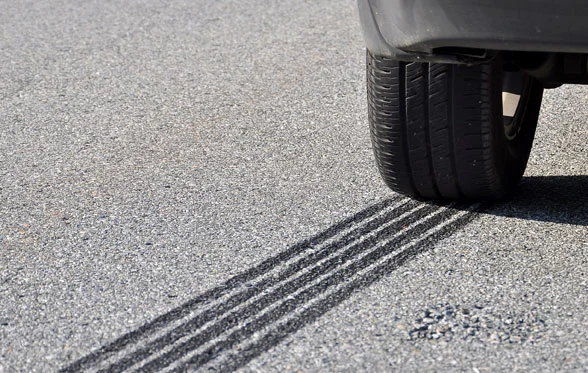The mandatory fitment of Intelligent Speed Assistance (ISA) systems is one of the new safety features required by EU Regulation 2019/2144 on "the type approval requirements of motor vehicles and their trailers, and systems, components and separate technical units intended for such vehicles, as regards their general safety and the protection of vehicle occupants and vulnerable road users", more commonly referred to as General Safety Regulation 2 or GSR 2. According to an analysis of road traffic accident statistics carried out on behalf of the European Commission, excessive or inappropriate speed is a contributory factor in 10 to 15% of all crashes, and in 30% of all fatal crashes, which occur in the European Union.
Within (EU) 2019/2144, Intelligent Speed Assistance (ISA) systems are defined as "a system to aid the driver in maintaining the appropriate speed for the road environment by providing dedicated and appropriate feedback". From July 6, 2022, the fitment of an ISA system becomes mandatory for all new types of M and N category vehicle (i.e. all passenger carrying and goods carrying motor vehicles) and, from July 7, 2024, the fitment of such systems will become mandatory for all new vehicles falling into those categories.
To support the mandatory introduction of ISA systems, the European Commission have been developing a Delegated Regulation to specify the necessary technical requirements and test procedures for such systems over the past three years. This work culminated with the publication of Delegated Regulation (EU) 2021/1958 in the Official Journal of the European Union on November 17, 2021.
Rather than mandating one specific technical specification for all ISA systems, EU Regulation 2021/1958 permits a number of options and allows the vehicle manufacturer to select the most appropriate option for their vehicles. Basically, the Regulation permits any of the following types of ISA system:
- ISA systems which provide the driver with visual plus cascaded audible warnings.
- ISA systems which provide the driver with visual plus cascaded haptic warnings.
- ISA systems which provide the driver with purely haptic warnings.
- ISA systems which automatically reduce the vehicle speed by controlling the propulsion system power output.
In all cases, the driver can choose to ignore the warnings provided by the ISA system and/or override the ISA system, i.e. the driver is always in full control of the vehicle speed.
All ISA systems must include a Speed Limit Information Function (SLIF), which determines the applicable speed limit and displays this information to the driver. The ISA system may determine the applicable speed limits by the visual observation of speed limit signs (using a camera based system) or by the visual observation of road signs in combination with other effective methods, such as Global Navigation Satellite Systems (GNSS), electronic map data, etc. Annex II of (EU) 2019/1958 contains examples of the speed limit signs used in all of the different EU Member States and ISA systems must be capable of functioning correctly with any of them. The speed limit information established by the SLIF must be displayed to the driver, as a minimum, whenever the vehicle’s actual speed exceeds the applicable speed limit.
In addition to the SLIF, the ISA system must also include either a Speed Limit Warning Function (SLWF), which alerts the driver when the actual vehicle speed exceeds the applicable speed limit, or a Speed Control Function (SCF), which attempts to limit the vehicle speed to a speed at or below the applicable speed limit.
If a Speed Limit Warning Function (SLWF) is provided, the warnings must be either:
- Visual plus cascaded audible warnings, where a flashing optical warning is initially provided, and then reinforced with an audible warning if the driver does not react to the optical warning,
- Visual plus cascaded haptic warnings, where a flashing optical warning is initially provided, and then reinforced with a haptic warning (either increasing the resistance of the accelerator control or vibrating the accelerator control) if the driver does not react to the optical warning, or
- Haptic only warnings, where the warning is purely provided by increasing the resistance of the accelerator control.
For all of the aforementioned SLWF options, the Regulation specifies maximum time periods for which the warnings may be maintained. After these time periods have elapsed, even if the driver has not reduced the vehicle speed, the warnings must cease.
If a Speed Control Function (SCF) is provided, it must automatically reduce the propulsion system power output until the vehicle speed no longer exceeds that applicable speed limit, and then maintain that speed. At any point during an SCF intervention, it must be possible for the driver to override the system by performing a positive action, such as pressing the accelerator control harder or deeper.
In addition to specifying the technical requirements that ISA systems must comply with, (EU) 2021/1958 also specifies the test procedures which must be followed to demonstrate compliance with the applicable technical requirements. One of the tests to verify the correct operation of the Speed Limit Information Function (SLIF) consists of a real world driving test on public roads. The route for this test must include urban roads, non-urban roads and motorways, and cover a total distance of 400km. During this test, the SLIF must correctly establish the applicable speed limits for at least 90% of the distance travelled.
